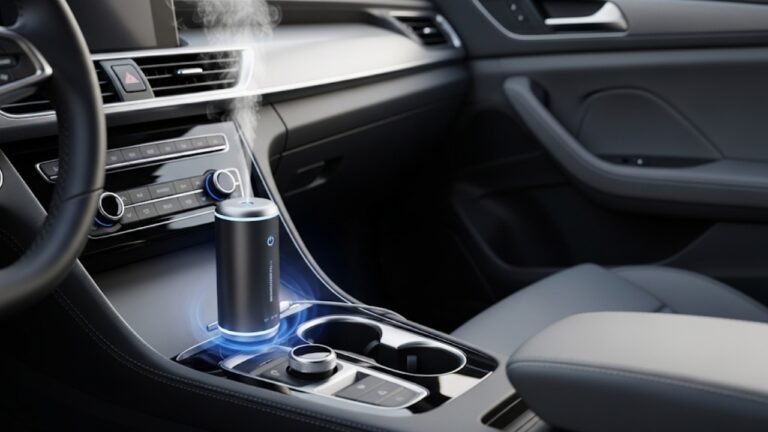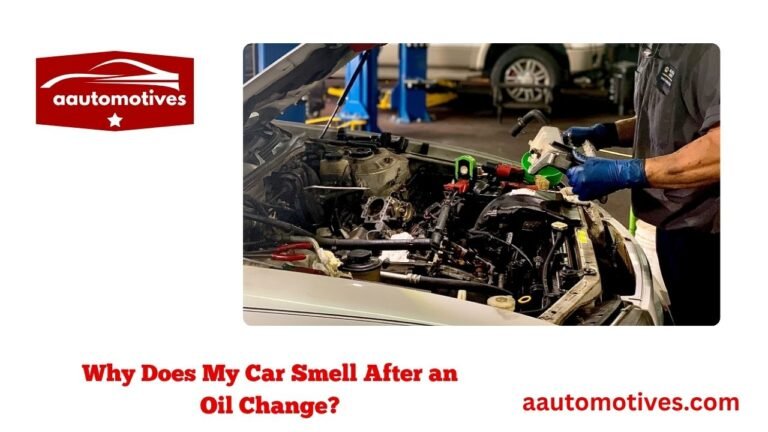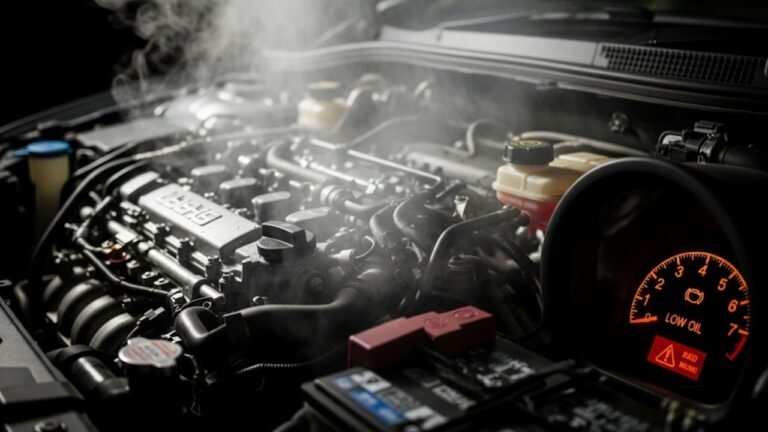What Happens If There Is Too Much Oil in Your Car?

We’re taught that motor oil is the lifeblood of your car—and it’s true. It keeps everything running smoothly, reduces friction, and helps cool your engine. But what happens if you pour in just a bit too much? Maybe you were topping it off, or maybe a shop overfilled it. Either way, that extra oil can lead to bigger problems than you might expect.
Let me tell you a quick story: One of my cousins had just gotten his first car—a little used Honda Civic. He loved that thing. One weekend, he changed the oil himself, thinking, a bit more can’t hurt, right? A week later, white smoke poured from his exhaust and his engine sputtered like it had a cold. That’s when he learned—too much oil in your car can damage more than your pride.
In this article, we’ll unpack what happens if there is too much oil in your car, why it’s a problem, and how to fix it before real damage is done. We’ll go deep—but keep it simple, real, and useful.
The Purpose of Engine Oil: Why It’s So Important
Engine oil isn’t just there to make things slippery. It does several key things that keep your engine alive and well:
-
Lubricates moving parts to prevent wear.
-
Cools down the engine by absorbing heat.
-
Cleans the engine by trapping dirt and particles.
-
Prevents corrosion inside the engine.
-
Seals tiny gaps between parts like pistons and cylinders.
Without the right amount, your engine could overheat, seize up, or just die slowly over time. But too much oil in your car isn’t just harmless overflow—it disrupts the balance.
What Happens If There Is Too Much Oil in Your Car?
Now let’s get into the meat of it. When you overfill engine oil, it rises too high in the oil pan. Here’s what happens next:
-
The crankshaft dips into the oil and whips it like cream.
-
That whipping creates foam, which messes up lubrication.
-
Foamy oil can’t protect parts properly.
-
The pressure inside the engine builds up unnaturally.
-
Gaskets and seals may blow, causing leaks.
-
Worst case? Catastrophic engine failure.
Let’s put that in a quick table:
| Effect of Too Much Oil | What It Does |
|---|---|
| Oil foaming | Reduces lubrication quality |
| Crankshaft drag | Slows engine, wastes power |
| Blown gaskets | Causes oil leaks and pressure loss |
| Fouled spark plugs | Leads to misfiring and engine issues |
| Catalytic converter damage | Burns excess oil, shortens lifespan |
Having too much oil in your car is like flooding a recipe with salt. It ruins the flavor—and in this case, the engine.
Signs You’ve Overfilled the Engine Oil
If you’re like most people, you might not notice right away. But here are a few symptoms of too much oil in your car to watch for:
-
Blue or white smoke from the exhaust
-
Strong burning oil smell while driving
-
Poor acceleration or a sluggish engine
-
Oil leaks under your car
-
Check engine light or oil light comes on
-
High-pitched whining or strange noises under the hood
I remember another time when I took my old Toyota in for an oil change, and the mechanic put in almost a quart too much. Within a day, I noticed the engine struggling to accelerate, and I smelled that burnt oil scent. Pulled the dipstick—sure enough, it was over the full line.
Why Excess Oil Damages Engine Components
This is where things get technical—but stay with me.
Your engine’s crankshaft rotates at high speeds. It’s not designed to churn oil like a blender. When there’s too much oil, that churning creates air bubbles—aeration. The oil becomes frothy and loses its ability to lubricate properly.
What does that mean for your engine?
-
Rods and bearings lose protection, increasing wear.
-
Valves can get coated with oil, interfering with airflow.
-
Catalytic converters burn excess oil, reducing lifespan.
-
Spark plugs get fouled, causing misfires or engine hesitation.
So while oil is meant to protect, too much of it can turn your engine into a ticking time bomb.
The Mental Game: Why Overfilling Happens So Often
Let’s be honest—most of us are just trying to take care of our cars. You see the oil dipstick is a little low, and you figure adding a bit extra will help. Or maybe a mechanic isn’t paying close attention and tops it up too fast.
It’s easy to make this mistake, and that’s part of what makes it dangerous. The consequences don’t always show up right away, but they can sneak up on you.
This is why it’s crucial to know how to read the dipstick properly and understand your engine’s oil capacity.
How to Check If There’s Too Much Oil in Your Car
Here’s a simple guide to check if you’ve overfilled:
-
Park on a level surface.
-
Turn off the engine and wait 5–10 minutes.
-
Pull out the dipstick, wipe it clean, then insert it again.
-
Pull it out and check the oil level:
-
Between MIN and MAX = Good
-
Above MAX = Overfilled
-
If you notice the level creeping over that top line, don’t ignore it. That’s your car’s way of telling you something’s wrong.
How to Fix an Overfilled Oil Problem Safely
So you’ve checked the dipstick, and the oil level is too high. Don’t panic—you can fix it, and the sooner you do, the better.
Here are a few methods you can use:
1. Use a Manual Oil Extractor
One of the easiest ways is using a manual oil extractor, also known as a fluid evacuator. You insert a small hose into the oil dipstick tube and pump the excess out.
-
It’s clean and simple.
-
Great for small overfills (half a quart or less).
-
You won’t need to get under the car.
2. Drain It from the Oil Plug
If you’ve overfilled by more than a quart, it’s safer to drain from the oil pan:
-
Place a pan under the oil plug.
-
Loosen the plug slowly and let a bit drain.
-
Tighten it again and recheck the level.
It’s a bit messier, but sometimes necessary.
3. Visit a Mechanic
If you’re unsure, or if you suspect engine damage already started, have a pro check it out. They can flush the system, inspect the catalytic converter, and reset any warning codes.
What Happens If You Ignore It?
This is where things get real. If you don’t deal with too much oil in your car, here’s what could happen over time:
-
Seals and gaskets fail, leading to expensive leaks.
-
Catalytic converter may burn up—costing $1,000+ to replace.
-
Spark plugs foul, reducing fuel economy and performance.
-
Worst case? Complete engine failure due to hydro-locking.
Imagine your engine trying to compress oil instead of air—something it was never designed to do. That’s how pistons bend, rods snap, and engines die.
Ignoring it is like hearing your smoke alarm and deciding to nap instead.
Real-Life Experiences: You’re Not Alone
I once had a client who drove a Mazda CX-5. After an oil change at a discount chain, the car started running rough. We popped the hood, pulled the dipstick—and oil gushed out the tube. Turns out they had poured in 2 extra quarts.
The result?
-
A blown rear main seal.
-
Oil soaked exhaust.
-
$1,500 in repairs.
And he didn’t even drive 100 miles.
So yeah, too much oil in your car isn’t something you can just “drive off.”
Long-Term Effects on Your Engine’s Health
Let’s say you overfill once and drive a short distance before correcting it. Will your car explode? Probably not.
But if it becomes a pattern—or if you drive far with that extra oil—the long-term toll on your engine is real.
Here’s what happens over time:
-
Oil pumps get overworked, shortening their life.
-
Worn piston rings due to oil burn.
-
Sensors (especially the O2 sensor) get coated in residue.
-
Oil sludge starts to form inside the engine.
This all chips away at your engine’s efficiency, power, and fuel economy. Eventually, you’ll see engine light codes pointing to “random misfires,” “fuel trim issues,” or “emissions faults”—all stemming from oil overflow.
Preventing It from Happening Again
To keep your car healthy, here’s what you can do:
- Always check your dipstick before and after adding oil.
- Use the correct oil type and volume as listed in your owner’s manual.
- Don’t top off unless your oil is genuinely low.
- After an oil change, recheck the level once the engine cools.
- Educate your mechanic or double-check their work.
Safe Oil Levels by Engine Size
| Engine Size | Typical Oil Capacity | Max Tolerance |
|---|---|---|
| 4-Cylinder | 4.5–5 quarts | Up to 5.2 quarts |
| 6-Cylinder | 5.5–6 quarts | Up to 6.3 quarts |
| 8-Cylinder | 7–8 quarts | Up to 8.3 quarts |
Even though there’s a little tolerance, don’t risk it. Stick close to the recommended level.
FAQs: Your Top Questions Answered
Q1: Can too much oil cause white smoke?
Yes, when oil gets into the combustion chamber, it burns and creates white or blue smoke from the exhaust.
Q2: Will the engine light come on if there’s too much oil?
Sometimes. While not always immediate, overfilled oil can trigger check engine or oil pressure lights if sensors detect imbalance.
Q3: Can I drive short distances with too much oil?
Short distances may not cause instant damage, but even 10–15 miles can start to foam the oil and harm the engine. It’s not worth the risk.
Q4: How much oil is too much?
Anything above the MAX mark on the dipstick is too much. Even half a quart over can lead to problems.
Q5: Can an oil overfill fix itself?
No. Unlike coolant, oil won’t evaporate or burn off safely. You have to drain it—manually or with a mechanic’s help.
Q6: What should I do if a shop overfilled my oil?
Politely return and ask them to correct it. Document everything. Reputable shops will fix it for free.
Q7: How long does it take for damage to show from too much oil?
It varies. In some cars, damage can start within a few miles, especially with turbocharged or high-compression engines.
Q8: Is engine flushing needed after overfilling?
Only if the oil foamed heavily or leaked into combustion zones. Your mechanic can advise based on symptoms.
Final Thoughts: Respect the Dipstick
Cars are surprisingly tough—but not when we ignore the basics. If you’ve wondered what happens if there is too much oil in your car, now you know: It foams, leaks, burns, and eventually bites back.
So next time you’re changing oil or topping it off, take a second look at that dipstick. It might just save your engine—and your wallet.






